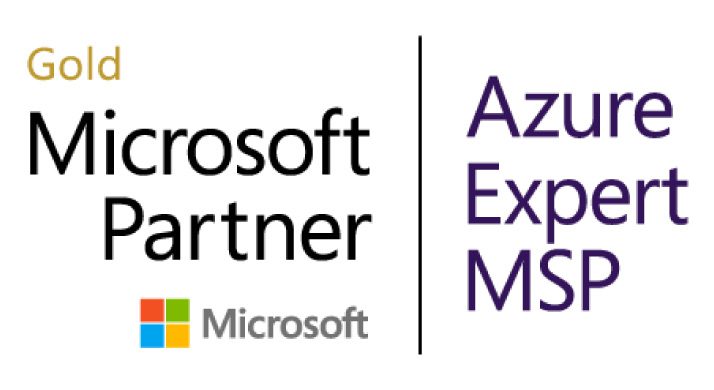6 ways you can support technology adoption and change management:
Discover how to drive adoption, secure employee buy-in, and increase ROI for your new technology deployments.

What is adoption and change management (ACM) and why is it important?
Change management is “the application of a structured process and set of tools for leading the people side of change to achieve a desired outcome.” – Prosci
Today, end users are more regularly impacted by technology tool changes than ever before. Organizations no longer update their software every three years with a new version release. With the introduction of cloud technologies, organizations are routinely pushing updates and rapidly pivoting to new vendors.
Change is inevitable, but it shouldn’t be disruptive. With effective change management, you can give employees what they need to stay productive, gain experience, and increase your organization’s ROI.
In fact, Prosci’s research suggests that organizations operating with a change management strategy are seven times more likely to meet project objectives and 1.4x as likely to stay within budget.
SHI is here to help you achieve results like these for your own organization. With these six simple steps, you can kickstart your own ACM plan and help your organization not only maintain productivity and increase time-to-value (TTV), but also foster happier employees.
Step 1: Define your purpose and create a change team
To willingly adopt and take advantage of changes, your users need to understand why these changes are necessary. Provide a clear and simple reason. Encourage employee buy-in by having a compelling answer to the question, “What’s in it for me (WIFM)?”
It’s also important to identify the leaders driving this change. This will not only be the IT leader helping support the technology change itself, but also those who can make a personal connection with the impacted user groups within your organization. Some roles to consider include:
- Technical lead: The individual within your IT organization who is responsible for the actual technology deployment
- Executive sponsor: A respected leader within your organization who will explain to employees what this change will achieve
- People lead: The individual who will execute the ACM plans while working with the technical lead to understand end users’ needs and concerns
Step 2: Identify priority groups and survey your employees
No matter how sweeping a change may be, levels of resistance and impact will inevitably vary among your teams.
Moving from Microsoft to Google desktop applications? Add your accounting team to one of your priority groups. They will likely have concerns and feedback related to working in Excel vs. Sheets.
Moving from WebEx to Microsoft Teams for meetings? Make sure to get the executive admins in your priority group list. They’ll contribute valuable feedback and concerns due to their active role in managing executives’ calendars and virtual meetings.
To continue closing gaps and strengthening your WIFM messaging, you must also monitor the pulse of your general employee population. Send out a survey to collect feedback about their concerns and levels of excitement. Knowing their voices have been heard will help users feel supported and will enable you to focus your communication and training on what truly matters to them.
Step 3: Create a diverse champion network
A champion network is a set of employees invested in adopting and providing feedback for your new technology. These could be leads from your priority groups, individuals with prior experience with your new technology, or perhaps a few users who are quick to learn and enjoy helping their teams. Regardless, it’s imperative to ensure your champion network is a diverse group from all departments and leadership levels.
Middle management with several direct reports, for example, can act as a pilot group for testing changes before deploying to the masses, providing valuable early feedback. Empower them to spread the word about accomplishments and relay their and their peers’ feedback to leadership. The free flow of information in both directions will ensure a smooth process.
Step 4: Develop your communication plan (using WIFM)
When first communicating a change with your organization, ensure your message is clear, persuasive, and, perhaps most importantly, not ignored. Your executive sponsor will have the high visibility needed to make this happen, and thus should be the first person communicating your change. Reviewing your priority group feedback and survey results, the executive sponsor’s communication should:
- Define why the change is necessary
- Reiterate the understanding of employee concerns
- Explain how those concerns will be addressed
- Generate excitement with WIFM
After your executive sponsor communicates with the wider organization, create a “countdown-to-cutover” plan leading up to your cutover date. These communications can be reminders of the change, training notifications, preparation tips, and more.
Widen your reach by leveraging several channels for your communications, such as email, intranet announcements, flyers, etc. Your goal should be to generate a drumbeat leading up to the launch date, generating excitement as well as easing concerns.
Step 5: Deliver blended training programs
It’s imperative to train your employees for the new tools prior to cutover and to reinforce that training after making the switch. We recommend doing this with an approach blending live, instructor-led trainings with on-demand lessons.
Live trainings feature in-person instructors who can facilitate feedback, discussion, and interactivity otherwise unavailable via on-demand trainings. That being said, on-demand eLearning modules can reinforce your in-person instruction and function as always-available reference material, should any users need a refresher on anything they learned.
Just as your champion network and early adopters are the first to pilot the new technology, so should they be the first to participate in your trainings. Involving them in a “train-the-trainer” session enables them to help support users during your wider deployment. Feedback from these groups can also refine your training content for the masses. Follow your cutover date closely; delivering your live training before or just after that date will help ensure your users aren’t left fumbling with the new technology.
With the development of your, include lessons for your IT staff to help them administer the deployment. You may also want to include IT teams in a “train-the-trainer” session so they can adeptly respond to any potential end-user questions.
Step 6: Assess effectiveness and success
It’s common to question how to measure success for a new deployment, but the answer is different for every organization. Define what success means to your organization at the very start of your project. For example, perhaps you would like to see users using cloud file collaboration instead of sharing versions via email.
With your success defined, determine what tools you have available to measure that success. Be sure to gather your baseline data prior to launch so you have a starting point to measure from.
After your training and communications, survey your users again to see what worked, what failed, and what training is still needed. Ensure your users also have a platform for any open-ended feedback.
Once your deployment is complete, have a “closing session” with your stakeholders. Reflect on the deployment, user opinions from your surveys, and discuss what can be improved in the future. Determine how you can sustain your adoption program over the long term. This may include routine champion network meetings, quarterly surveys, additional training, and more.
You’ve made a significant investment in technology tools for your business; those tools are an investment, too. Make sure you’re doing your best to increase adoption by fully supporting your end users. Fully trained users will allow you to increase the value and ROI of your technology investments.
Too often, organizations have a myopic focus on ROI and technology deployments that emphasize the technology but about the people.Your users are your largest asset; treat them as such by providing the proper training, resources, and support needed to yield higher technology ROI. Software applications and tools are only as good as the people who use them. Therefore, it’s imperative to address the people side of change.
Ready to develop your own ACM strategy?
A proper ACM strategy empowers your organization to achieve desired business outcomes by ensuring your users benefit from and enjoy new technology. By leveraging change management, your organization can:
- Test and finetune changes prior to mass deployment
- Develop live and on-demand user trainings
- Address employee concerns and feedback
- Increase your technology ROI
- And much more
Figuring out an ACM strategy best suited for your organization can seem daunting. Luckily, SHI is here to help. Our teams of training and adoption experts follow industry-leading best practices to ensure your technology deployments are on target, within budget, and well-received.
Read our ebook to gain more expert insight on the benefits of adoption and change management. To start developing an ACM strategy of your own, contact your SHI Account Executive today.




